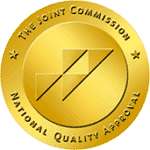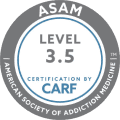Suboxone Addiction and Treatment
The Drug Enforcement Agency classifies Suboxone as a Schedule III prescription drug. It has medical uses, like helping people overcome opioid addiction, but it can also cause physical or psychological dependence.
When used as a part of a medically supervised treatment program and weaned off over time, it can play a significant role in helping someone reach long-term sobriety.
However, like most drugs, Suboxone can be misused. Examples of abuse include:
- Taking Suboxone in between heroin or other opioid uses to curb withdrawal symptoms
- Altering administration of the drug to snort or inject it
- Taking more Suboxone than prescribed
- Buying Suboxone on the street or buying someone else’s prescription
- Trading or selling your medications to get Suboxone
It can be confusing that a drug meant to help with opioid addiction can also lead to addiction. The explanation begins with the ingredients used to make Suboxone.
What Is Suboxone?
Suboxone has two ingredients, buprenorphine and Naloxone. Doctors can prescribe it for chronic pain, acute pain, and opioid dependence.
Buprenorphine produces the effects of other opioids, like morphine, but because it is long-acting, the effects do not happen at once but over a 24 to 72 hour period.
Alone, it can produce euphoric effects. This is one reason why Naloxone was added to form Suboxone. Naloxone reduces the euphoric effects produced by buprenorphine. However, Suboxone still produces side effects.
Side Effects of Suboxone
The side effects of Suboxone can differ based on dose, gender, weight, and length of use. According to the Suboxone manufacturer, possible side effects include:
- A mild but long-lasting feeling of euphoria
- Relaxation and lowered anxiety
- Headache
- Sweating
- Numb mouth
- Constipation
- Painful tongue
- Dizziness and fainting
- Problems with concentration
- Irregular heartbeat
- Insomnia
- Blurry vision
- Back pain
- Drowsiness
Someone using it to overcome opioid addiction can get the benefits of eliminating withdrawal symptoms without feeling high. They can have a clear mind to focus on recovery therapy, work, and family responsibilities.
Someone abusing Suboxone can develop a dependence on the drug. When trying to quit using it or unable to access it for a while, withdrawal symptoms may appear.
Suboxone Withdrawal Effects
The dose and length of time using Suboxone can determine the withdrawal effects that you will experience. They can include:
- Extreme nausea, vomiting, or diarrhea
- Muscle cramps and pains
- Sleep disturbances
- Severe anxiety
- Mood swings
- Intense cravings
- Flu-like symptoms
To avoid these withdrawal symptoms, people will continue to use Suboxone. To satisfy this dependence, they may participate in risky behaviors. Even when the consequences of their actions negatively impact quality of life, they continue to use Suboxone. This is a sign that they may have formed an addiction.
Suboxone Addiction
The signs of Suboxone addiction are like the signs and symptoms of addiction to other opiates. Common signs include:
- Stealing money or items to pawn for cash to purchase Suboxone
- Stealing prescriptions
- Lying to doctors to obtain more medications
- Mixing Suboxone with drugs or alcohol to get a more intense effect
- Continued behaviors of seeking and using Suboxone despite consequences like
- Loss of job
- Loss of home
- Loss of relationships
- Financial problems
- Legal issues
Suboxone addiction has multiple layers and may cause:
- Loss of interest in activities once enjoyed
- Isolating from friends and family
- Manipulating friends and family to get Suboxone
- Obsessive thoughts about the drug and fear of running out
Continued use of Suboxone also increases the chances of an overdose.
Suboxone Overdose
Overdosing on any drug can be life-threatening. A Suboxone overdose will increase the severity of the side effects. Common overdose symptoms include:
- Severe drowsiness and fatigue
- Severe headaches
- Severe nausea, vomiting, digestive issues
- Severe stomach pains
- Severe flu-like symptoms
- Burning tongue
- Respiratory problems
- Loss of consciousness
- Slurred speech
- Vision problems
- Sluggish reflexes
- Coma
- Death
To avoid the risk of overdose, seek help from an accredited drug and alcohol treatment facility. Treatment is available for Suboxone addiction at any stage. Whether just beginning to abuse Suboxone or after experience negative consequences due to long-term use, help is available.
Treatment for Suboxone Addiction
Suboxone addiction is treated like addictions to other opioids. The first step involves an extensive evaluation to determine the right treatment plan.
Some may need to start with an inpatient medical detox, while others may attend an intensive outpatient group with a medication-assistance program. Below are the available resources to help overcome an addiction.
Medication-Assisted Detox Program
Although Suboxone is typically used to help in the detox process, other options are available. A team of doctors, psychiatrists, nurses, and counselors will create a treatment plan and choose the best medication to administer during detox and throughout the program. The benefits of a medication-assisted detox program include:
- Medical supervision 24/7
- Controlled withdrawal symptoms
- Both addiction and mental health disorders are addressed
- Access to individual and group therapy
This type of detox program aims to eliminate cravings and physical discomfort, so there is no desire to leave treatment but instead stay and learn how to live without Suboxone or other drugs in the future.
Residential Treatment
In residential treatment, medication assistance continues to address any withdrawal symptoms, so they don’t interfere with digging deeper into learning why you became addicted to Suboxone and what it takes to maintain sobriety. Residential treatment therapists work one-on-one and in groups using various counseling techniques, including:
Cognitive-behavioral therapy (CBT): CBT is a form of talk therapy that explores the past and present and how they relate to addiction to Suboxone. With CBT, all issues are addressed, including grief, trauma, mental illness, and life skill needs. CBT is a great baseline treatment therapy that allows other modes of treatment to be applied, especially for those with past trauma.
Eye movement desensitization and reprocessing (EMDR): EMDR helps victims of trauma reduce the power of the trauma memories through a highly structured process. A certified EMDR specialist must only perform EMDR. While briefly focusing on the traumatic memory, stimulation of eye movements helps lessen the vividness and negative emotions associated with the traumatic event.
Motivational interviewing (MI): Motivational interviewing is a form of treatment that benefits those who aren’t quite ready for change. Committing to sobriety is complex and can feel overwhelming. With MI, a therapist can ask guiding questions to help develop reasons to stay sober. These reasons serve as motivation to maintain recovery.
Alternative Therapies: Finding a treatment facility that offers alternative therapies takes treatment to another level. Because there is no one-size-fits-all detox and recovery process, it’s essential to have access to therapies that meet more specific needs. Examples of alternative treatments may include:
- Art and Music Therapy
- Spirituality Practice
- Meditation
- Acupressure and Acupuncture
- Massage
- Fitness
Finally, treatment should include an aftercare plan. Too often, people leave treatment with no plan and quickly find themselves relapsing. An aftercare plan addresses the needs in all areas of your life, so you know exactly what to do to maintain sobriety when you return home. It also connects you with the resources in your hometown that will help you achieve your goals.
If you are struggling with an addiction to Suboxone, reach out for help. Start the process today and give us a call at (844) 933-4145. We will guide you through the entire process.
Our treatment specialists are available to talk 24/7/365. You can overcome your addiction to Suboxone. We can help.
Verify Insurance
Let’s get you or a loved one help with a few simple steps.



